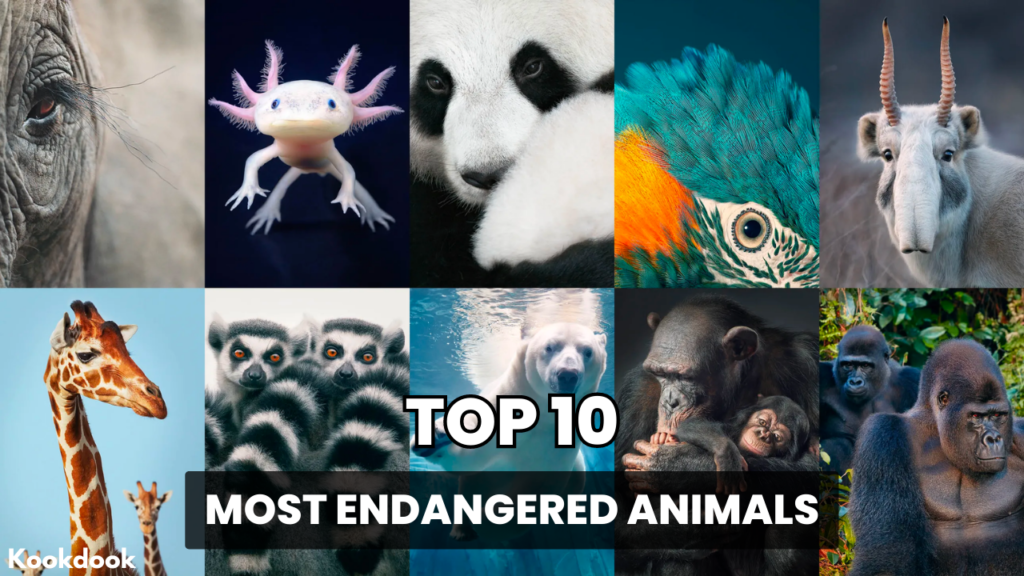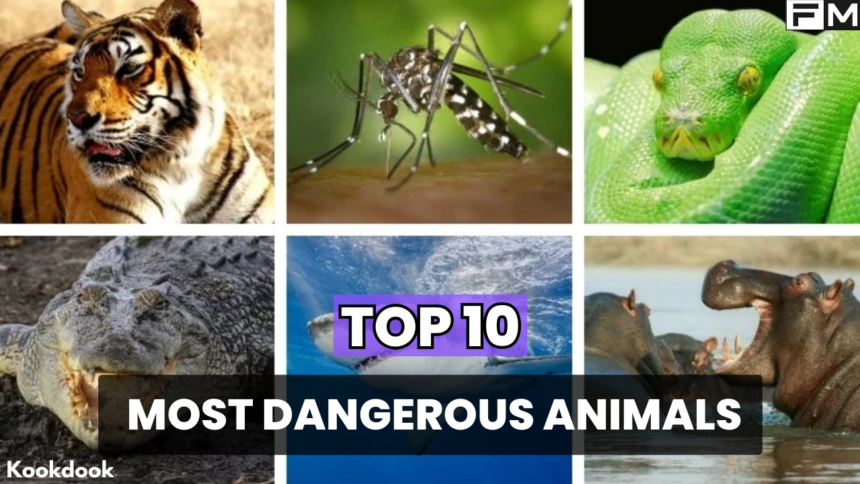Endangered animals are species that face the imminent threat of extinction due to a variety of factors. These factors encompass a range of challenges, including diseases, habitat degradation, illegal hunting, and the changing climate. When a species is labeled as endangered, it signifies that urgent measures are required to ensure its survival. The International Union for Conservation of Nature (IUCN) plays a critical role in assessing and categorizing these species on its “Red List,” which serves as a crucial tool for prioritizing conservation efforts and raising awareness about the state of different species.
Factors Leading to Endangerment
The endangerment of animals can be attributed to an array of interrelated factors. One significant contributor is habitat loss, often caused by human activities such as deforestation, urbanization, and industrial expansion. As natural habitats shrink, animals are left with fewer resources and suitable living spaces. Additionally, the illegal trade of animal parts, driven by poaching, poses a severe threat to many endangered species. The demand for these parts, driven by traditional medicine and luxury goods markets, exerts tremendous pressure on these animals. Moreover, the ongoing impact of climate change, including rising temperatures and disrupted ecosystems, further exacerbates the challenges faced by endangered species.
Impact on Ecosystems
The potential extinction of endangered animals can have far-reaching consequences for ecosystems and the delicate balance of nature. Ecosystems rely on intricate interactions between different species, where each contributes to the overall health and stability of the system. When a species becomes extinct, it can disrupt these interactions, leading to a chain reaction of effects. For instance, the disappearance of a predator can result in an overpopulation of its prey, leading to overgrazing and subsequent habitat degradation. Similarly, the loss of a key pollinator can impact plant reproduction and the availability of food sources for other animals. Therefore, the protection of endangered animals is crucial not only for their survival but also for maintaining the integrity and functionality of ecosystems.
Conservation Efforts and Success Stories:
Conservation initiatives aimed at protecting endangered animals take various forms, including legal protections, habitat restoration, captive breeding programs, and international collaborations. These efforts have led to notable successes in preserving certain species and increasing their populations. For instance, the giant panda, once on the brink of extinction, has experienced a rebound in numbers due to focused conservation measures and habitat preservation in China. Similarly, the California condor, a critically endangered bird species, has been saved from extinction through intensive captive breeding and reintroduction programs.

Here is the list of the top 10 most endangered animals in the world, according to the IUCN Red List
Javan Rhino:
The Javan Rhino, scientifically known as Rhinoceros sondaicus, is an extremely rare species of rhinoceros found exclusively in the Ujung Kulon National Park on the island of Java, Indonesia. With a population of fewer than 70 individuals, this one-horned rhinoceros is among the most endangered mammals on Earth. Its distinct skin pattern, characterized by sagging folds and wrinkles, sets it apart. The Javan Rhino is well adapted to its rainforest habitat and is often found in wallows and mudholes, showcasing its ability to survive in challenging conditions.
Vaquita:
The Vaquita, a diminutive porpoise species, resides in a limited region within the Gulf of California. This elusive marine creature is not only the smallest cetacean but also one of the most critically endangered. The primary threat to the Vaquita’s survival is bycatch, resulting from unintentional entanglement in fishing gillnets. Tragically, the population has plummeted to fewer than 30 individuals due to this and other threats such as pollution and habitat loss. Efforts to save the Vaquita include initiatives to eliminate harmful fishing practices and conserve its remaining habitat.
Mountain Gorilla:
The mountain gorilla, Gorilla beringei beringei, inhabits the mountainous terrain of Uganda, Rwanda, and the Democratic Republic of the Congo. With their population numbering less than 1,000, these majestic creatures are critically endangered. Challenges such as habitat loss, driven by deforestation for agriculture and logging, pose a significant threat to their survival. Additionally, mountain gorillas face the risk of poaching and disease. Conservation efforts include safeguarding their habitat and implementing anti-poaching measures to ensure the survival of this remarkable species.
Saola:
Known as the “Asian Unicorn” due to its rarity, the Saola is a critically endangered antelope species found exclusively in the Annamite Mountains of Vietnam and Laos. Discovered only in 1992, this recently identified large mammal possesses distinctive features, including a slim body, long straight horns, and whitely marked face, neck, and legs. The Saola’s survival is imperiled by habitat loss caused by human activities like logging and development. Efforts to protect this unique creature involve conservation of its forested habitat and raising awareness about its plight.
Amur Leopard:
The Amur Leopard, also known as Panthera pardus orientalis, is a critically endangered subspecies of leopard residing in northeastern China and the Russian Far East. Its striking appearance, characterized by a thick reddish-brown coat, sets it apart. Sadly, this magnificent feline faces threats such as habitat loss due to deforestation and conflicts with humans. The Amur Leopard’s population has dwindled to fewer than 70 individuals, making it one of the rarest big cats on the planet. Conservation initiatives focus on preserving its temperate woodland habitat and combating poaching.
Bornean Orangutan:
The Bornean Orangutan, Pongo pygmaeus, is an endangered primate species found on the island of Borneo. Recognized by their distinctive reddish-brown hair and prominent cheek pads, these orangutans are under threat due to habitat destruction caused by activities like logging and palm oil farming. They also face the danger of poaching and illegal pet trade. With an estimated population of around 14,000 individuals, conservation efforts involve protecting their forested homes and addressing the root causes of their decline.
Sumatran Elephant:
The Sumatran Elephant, Elephas maximus sumatranus, is a unique elephant species residing on the Indonesian island of Sumatra. Distinguished by its relatively small size, rounded ears, and long tail, this elephant faces the critical threat of habitat loss resulting from deforestation for agricultural expansion and palm oil plantations. Additionally, poaching for its valuable ivory exacerbates its decline. With an estimated population of fewer than 2,500, urgent conservation measures are necessary to safeguard the future of this remarkable species.
Sumatran Tiger:
Endemic to the Indonesian island of Sumatra, the Sumatran tiger, Panthera tigris sumatrae, is a highly endangered subspecies of tiger. Habitat degradation, driven by activities like logging and agriculture, poses a severe threat to its survival. The tiger’s population, estimated to be slightly over 400 individuals as of 2021, is further impacted by poaching and human-tiger conflicts. Efforts to save the Sumatran tiger focus on habitat preservation and reducing human impact in its remaining range.
Siberian Tiger:
The critically endangered Siberian Tiger, Panthera tigris altaica, calls the Russian Far East and northeastern China home. This largest subspecies of tiger is characterized by its distinctive white belly and dense fur. Habitat degradation, poaching for illegal trade, and conflicts with humans are significant challenges faced by these majestic creatures. The Siberian Tiger’s survival is jeopardized by the destruction of its habitat, which leads to increased human-wildlife conflict and the potential for retaliation against these magnificent animals.
Black Rhino:
The black rhino, scientifically known as Diceros bicornis, is a species of rhinoceros inhabiting eastern and central Africa. Recognizable by its dual horns and dark-colored skin, this rhino is critically endangered due to a variety of threats. Habitat degradation, driven by factors like deforestation and human encroachment, has led to a drastic decline in its numbers. Additionally, poaching for its valuable horns and conflicts with humans contribute to the challenges faced by the black rhino. Urgent conservation efforts are underway to prevent its extinction.



